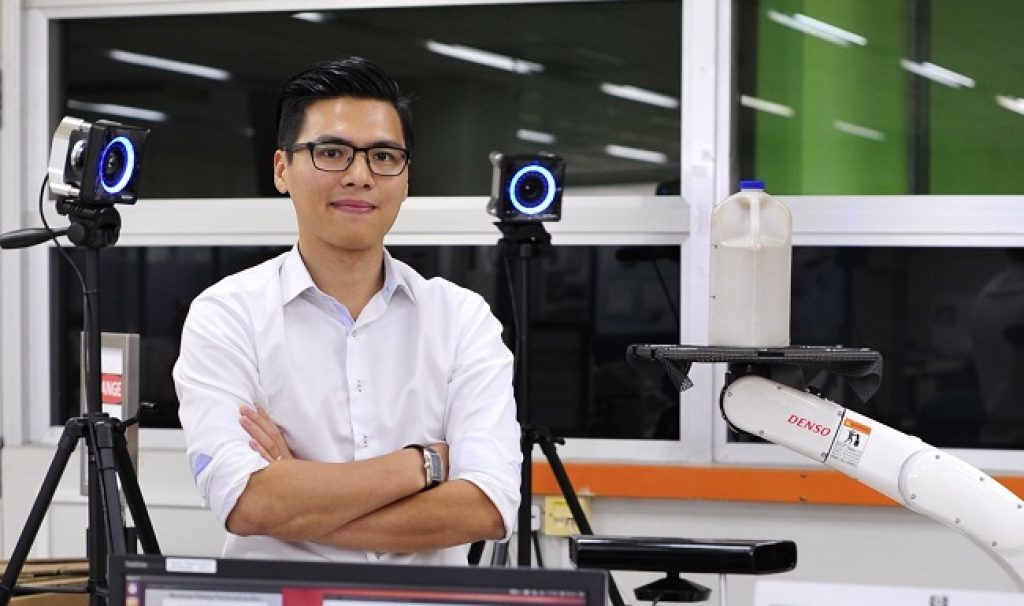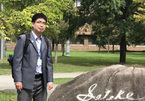Cuong and his co-workers at Nanyang University announced that their robot – IkeaBot – can assemble Ikea chairs, a task which requires complicated operations.

Pham Quang Cuong (Source NTU Singapore)
Cuong’s IkeaBot can plan the motion, search for chair parts, and adjust contact force to carry out operations.
Cuong’s first studies did not have close relations to industrial robots. He studied computing science at École Normale Supérieure in France and obtained a doctorate in neuroscience at Paris VI University. Only when he was a postdoc fellow at Tokyo University did he begin studies on robotics.
Cuong said his interdisciplinary knowledge in mathematics, physics and programming laid a firm foundation for him to develop robots. He focused on developing algorithms inspired by the principles of the nervous system operation to apply in robot programming.
Many scientists also followed this trend to create superior algorithms and use less energy. However, later, he shifted to research on industrial robots.
| Cuong became a lecturer at Nanyang University and set up a research team on robotics, focusing on three spheres of studying - robot vision (image processing and recognition); motion planning (developing robots that can plan their own activities) and intensity (adjusting robot’s contact force). |
Cuong became a lecturer at Nanyang University and set up a research team on robotics, focusing on three spheres of studying - robot vision (image processing and recognition); motion planning (developing robots that can plan their own activities) and intensity (adjusting robot’s contact force).
“The development of the technologies can create smarter robots, which are different from the majority of industrial robots which can only do repetitive actions,” Cuong explained.
The initial result brought an opportunity to establish a startup to develop robots with practical applications. For many reasons, Cuong and his co-workers decided to set up a spinoff Eureka Robotics, belonging to Nanyang University, in 2018 to commercialize their research results themselves.
One of the first achievements of Eureka Robotics is that its Archimedes Robot has been ordered by an American laser lens company.
However, Cuong admitted that technology commercialization is a long and risky process. He has to decide how to price his products and which markets to focus on.
In November 2019, Cuong and his team displayed their products at an exhibition in Japan and received good feedback. This promises to bring more clients from Japan in the future, and possibly from Vietnam.
Cuong is the author of over 30 scientific articles published on ISI journals in 2011-2019. He said developing startups is his second goal, while his top priority task is carrying out basic research.
Mai Lan

Vietnamese scientist uses food fibers to prevent bowel cancer
At the age of 30, Dr Tran Van Hung turned down a job opportunity in Japan and returned to Vietnam to work. He is the author of 16 SCI/SCIE articles published in Ranking Q1 international journals.

Vietnamese 8X generation listed among the world’s top scientists
Young Vietnamese scientists born in the 1980s have found their names on the list of the world’s 106,369 leading scientists for the number of scientific citations and scientific quantitative indicators, according to Scopus Database.
 Based on research with a high level of applicability, Dr Pham Quang Cuong of Nanyang Technology University, set up Eureka Robotics, a startup specializing in providing robots to large corporations.
Based on research with a high level of applicability, Dr Pham Quang Cuong of Nanyang Technology University, set up Eureka Robotics, a startup specializing in providing robots to large corporations.